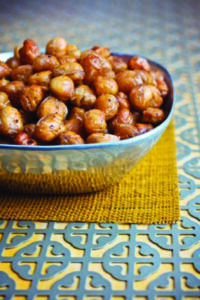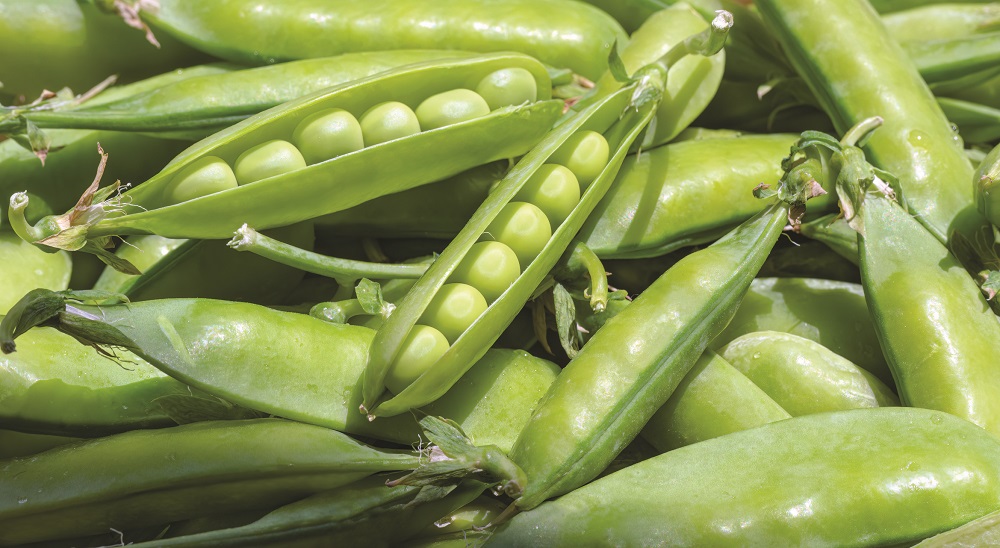You may love black beans, kidney beans, lima beans, split peas, chickpeas and lentils, but chances are you’ve been calling them by the wrong name for all these years. While beans, lentils, chickpeas, and split peas typically are referred to as beans or legumes, the correct term actually is pulses. They are indeed part of the legume family, which includes any plant that grows in a pod, but the word “pulse” refers specifically to the dry, edible seed that lives within the pod. A pea pod is a legume, but the pea inside is the pulse. Beans also grow in pods, usually yellow, green or purple depending on the type of bean, or pulse inside.
Pulses provide a unique nutrient package—they’re low in fat…rich in fiber, vitamins, minerals and antioxidants…and include most of the highest-protein beans, such as black, kidney, lima, navy, pinto and white kidney (cannellini) beans.
Regular pulse consumption has been shown to protect against…
Weight gain and obesity. Because they’re high in protein and fiber, pulses help you feel fuller longer so you naturally eat less food overall.
Type 2 diabetes. Pulses’ high fiber content helps stabilize blood sugar levels, preventing the type of blood sugar spikes and crashes that can, over years, predispose you to type 2 diabetes.
High blood pressure, high cholesterol and heart disease. Your heart loves pulses! Regularly incorporating them into your diet protects cardiovascular health thanks to their fiber and phytochemicals—biologically active compounds produced by plant foods that help curb LDL (bad) cholesterol. One type of phytochemical—plant sterols—looks and acts like cholesterol in the body, which tricks your digestive system into grabbing onto them, instead of actual cholesterol, leading to lower overall cholesterol numbers.
Cancer. Pulses boast cancer-fighting antioxidants, and their fiber helps move waste through the digestive tract, reducing risk for colon cancer, the third most commonly diagnosed cancer in the US. Fiber also feeds the microbiome—the trillions of microorganisms that populate your gastrointestinal tract—promoting gut health in a way that reduces inflammation, also reducing colon cancer risk.
These benefits are important for everyone but especially for people age 55 and older, because reducing chronic disease risk and optimizing gut health tend to become priorities.
Pulses also are good for your wallet. Expect to save $5 or more per pound when choosing pulses over meat. One serving of pulses costs about 10 cents compared with about $1.50 per serving of beef…$0.73 per serving of pork…and $0.63 per serving of chicken.
And they are good for the planet. Compared with animal proteins, plant proteins like pulses emit fewer greenhouse gasses into the atmosphere, require less water and land to grow, and result in less food waste.
Are you ready to put your finger on the pulse of nutrition? Try one of these three recipes, courtesy of USA Pulses, a coalition of nonprofit organizations representing the dry pea, lentil, dry bean and chickpea industry in the US.
Orange Ginger Zinger Creamsicle Smoothie with White Beans
White beans (also called cannellini beans) are among the highest protein beans. This sweet and spicy smoothie delivers eight grams each of fiber and protein per serving. Makes two servings.
- ¾ cup orange juice
- ¾ cup frozen mango
- ¾ cup canned white kidney (cannellini) beans, drained and rinsed
- ½ cup peeled, grated carrot
- ¼ cup vanilla Greek yogurt
- 1 Tablespoon honey
- 1 Tablespoon grated fresh ginger
Combine all ingredients in a blender, and process until very smooth. Garnish with an orange or lemon wedge.

Cherry Almond Red Lentil Granola Bars
Red lentils provide the most protein at 12 grams per one-half cup cooked. Makes 16 bars.
- 1 cup dried red lentils
- 1 cup oat flour
- 1 cup rolled oats
- 1½ teaspoons cinnamon
- 1 teaspoon kosher salt
- ½ cup unsalted almonds, chopped
- ½ cup dried cherries, chopped
- ¼ cup ground flaxseed
- ¼ cup unsweetened coconut flakes
- 2⁄3 cup almond butter
- ½ cup unsweetened applesauce
- ½ cup maple syrup (use 2⁄3 cup for a sweeter bar)
- 1 Tablespoon vanilla extract
Preheat the oven to 350°F. Line a 9-x-13-inch baking dish with foil, and spray with cooking spray.
Combine the red lentils and two cups of water in a medium saucepan over high heat, and bring to a boil. Once boiling, reduce heat to low, cover, and cook for about 10 minutes or until the lentils are just tender. Drain any excess liquid.
While the lentils cook, add the remaining ingredients to a large bowl. When the lentils are cooked, add them to the bowl, and stir together until everything is incorporated.
Pat the mixture evenly into the prepared baking dish. Bake for approximately 25 to 35 minutes or until the center is firm to the touch and the edges are lightly browned. Allow to cool slightly, then cut into bars. Store the bars in an airtight container for two to three days on the counter, or wrap individually and freeze them in an airtight container.

Za’atar Spiced Crispy Chickpeas
Just one-half cup of cooked chickpeas contains six grams of fiber and seven grams of protein. Za’atar gives this recipe a Middle Eastern flair with a punch of thyme and oregano. Pop these in your mouth like chips, or sprinkle them on salads, soups or pasta. Makes three servings.
- 2 (15-ounce) cans chickpeas, drained and rinsed
- 1 teaspoon olive oil
- 1½ teaspoons salt
- Za’atar, to taste
- Salt, additional, to taste
Preheat the oven to 350°F.
After rinsing and draining the beans, spread them out on a plate and pat them dry with a paper towel to absorb as much excess moisture as possible—key for maximum crispiness. Transfer them to a sheet pan. Drizzle on the olive oil, and sprinkle on the salt. Toss well, then spread them out so they are spaced out in a single layer.
Cook until golden brown, about 40 minutes. Gently shake the pan occasionally for more even cooking. Season generously with za’atar and additional salt to taste. Serve immediately, or store in an airtight container for up to three weeks.

Pulse Swaps for Your Favorite Recipes
Replace white rice with a bed of cooked lentils.
Fill tacos with black beans instead of meat (or replace just half the meat with the same amount of black beans).
Replace mayonnaise on a sandwich with hummus (chickpeas are the main ingredient).
Replace all-purpose flour in your brownie recipe with a 15-ounce can of rinsed, drained black beans that have been puréed until silky smooth.


